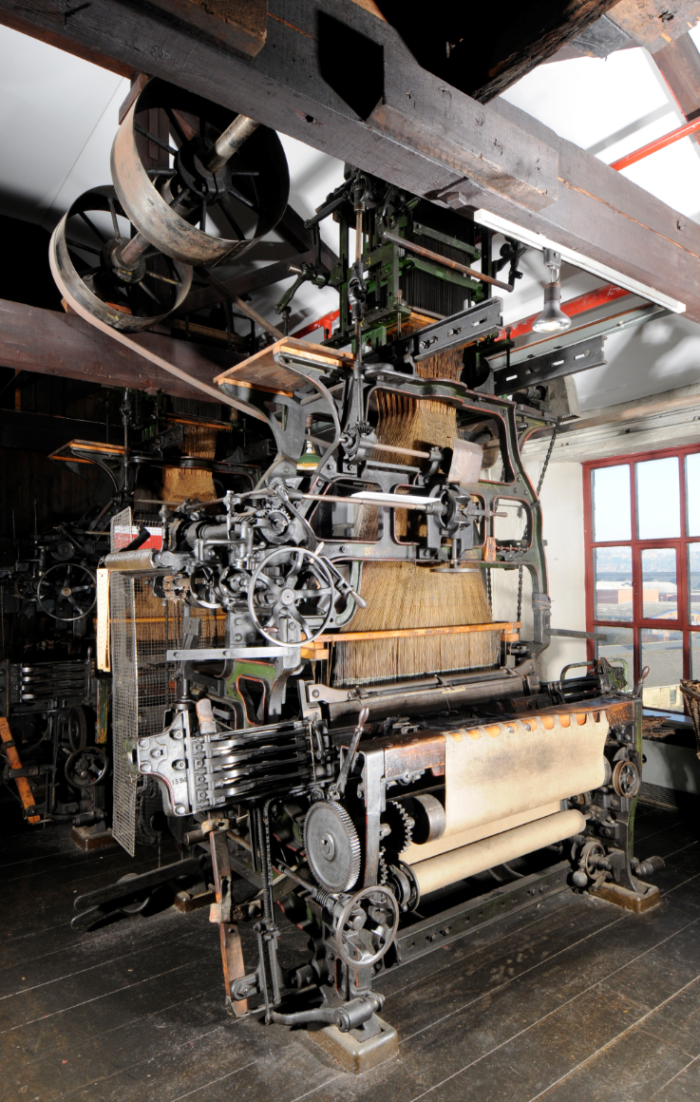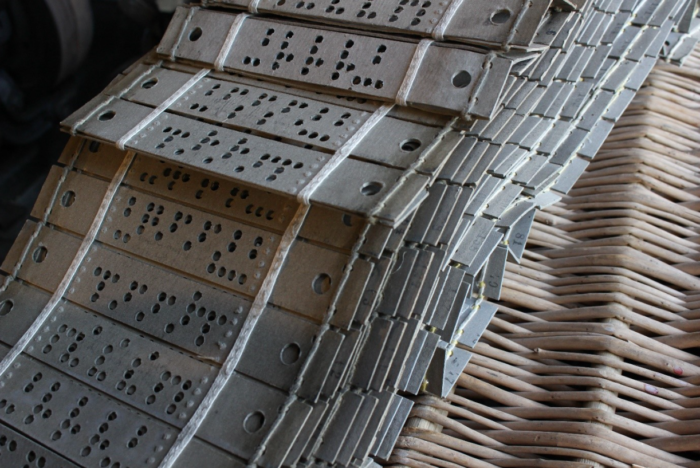Thoughts from Armley (April 2022)
Hello and welcome back, all, to the latest instalment of the Song of the Female Textile Workers, past, present and the future project blog! Unless of course you're perusing the archives, in which case welcome to this exciting pre-existing entry! I know you'll be eager to find out what we're discussing this time, so let's dive on in! Having introduced the project in last week's entry, we thought it would be fun and insightful to focus a little more over the next few weeks on each of the major players involved, and their experiences with - and hopes for - the project.
So today, we'll be exploring a little of Leeds Industrial Museum - the host of the upcoming performance - and what its part in the project means to them.
The museum itself is housed within the converted Armley Mills, which sit astride the River Aire near Kirkstall, in Leeds.
The story of the mills is one that echoes countless others told across the industrial world. Once the largest woollen mill on the planet, Armley mills eventually succumbed to advances in technology and changing economic climates, and was forced to close in 1971. But rather than letting the historic building fall into ruin and obscurity, Leeds City Council bought the now derelict mills and resolved to re-open them as an industrial museum, preserving the heritage and history of the site, as well as the region as a whole. A little over a decade later, in 1982, Leeds Industrial Museum opened its doors for the first time. Today, the museum houses a wide range of varied collections - including textile machinery, railway equipment and heavy engineering - and tells the story of the industrial heritage of Leeds - the self-styled 'city of 1000 trades'. In this way, the mills have become an embodiment of the creative industries that spring forth in the wake of sweeping industrial change.
I sat down with Chris Sharp, Keeper at Leeds Industrial Museum and Thwaite Watermill, and Aleks Fagelman, Assistant Community Curator, to talk about the project, their involvement in it, and what they are hoping it might bring to the museum.
Immediately, it is clear that it is the spirit of embracing change and new technologies that has so defined the mills - in both its existence as a textile factory and now as a museum - that has, at least in part, brought the museum into partnership with the latest Song performance.
Visions of augmented reality breathing life into the museum's machinery for the first time in decades, and in some cases perhaps even centuries, certainly seem too good to pass up. With so much going on in the museum - and it is heaving with any number of examples of machinery from across its centuries in operation - it is easy to lose sight of what each actually means.
Aleks mentions in particular the Jacquard loom that sits proudly amongst its peers in one particular room of the museum. Although certainly imposing, it appears rather unassuming at first glance; 'just another loom', one might think as one strolls on by.

The Jacquard loom (Image courtesy of Leeds Museums and Galleries)
But sat atop the weaving surface of the machine - hidden in plain sight - is what makes it so unique, and such an important part of industrial - and indeed technological - history; a roll of cards mysteriously full of punched holes. These seemingly arbitrary collections of dots and spaces contain within completely programmable instructions that tell the loom what pattern to print. In fact, original versions of this device were the first programmable machines, and paved the way for modern computing long before the invention of Turing machines, and even Babbage difference engines.
As Aleks points out, this fascinating piece of history is largely lost to visitors of the museum unless it is expressly pointed out by an employee or curator. It is their hope that developments like the Song Future performance can help to highlight items such as this in interesting and engaging ways, and explain why they are so historically important.

The programmable punch cards that control the loom's patterns (credit: Skippko)
There was something serendipitous about Aleks specifically mentioning the Jacquard loom. During the tour of the museum with our digital partners, those among us with computing backgrounds had naturally gravitated towards the punch cards as rudimentary examples of what we do day-to-day for a living. Indeed, the use of the punch card as a motif in the performance to reflect technological innovation was brought up at the time, and is still being explored now.
But both Aleks and Chris are keen to point out the museum's involvement is about more than just showing off its collections in exciting, novel ways. Their larger aspiration with the project is to engage with new and wider audiences, and to explore how the seemingly foreign cultural experiences of Lu and her family might reflect the stories of those more local to Armley.
It is, as they so eloquently put it, the commonality of human experience that brings us together.
As we share our story, they hope that it will encourage the visitors to share theirs back, such that they may continue to expand the scope and knowledge of the museum, and preserve for future generations what might otherwise be lost to time.
Chris tells me one such story from Armley's history; that of the final caretaker of the mill, and his family. They lived in one of the mill's attached cottages, sitting beside the garden of colours and looking out onto the Aire's towpath and lush far bank. Their children were born at the mill, and they must certainly have believed that they too would grow up to find gainful employment within; it was their entire lives.
Of course with the final closure of the mill this would not come to pass, but the family never became strangers to Armley. Although the caretaker himself has sadly passed on, his wife - now into her 90s - and family are often to be found visiting the museum grounds, telling tales of their time at the mill to any and all that will listen.
These are the stories that we are hoping to capture in our research, using the Song future performance as a catalyst.
For more information on this collaboration see LIM page Song: The Future
